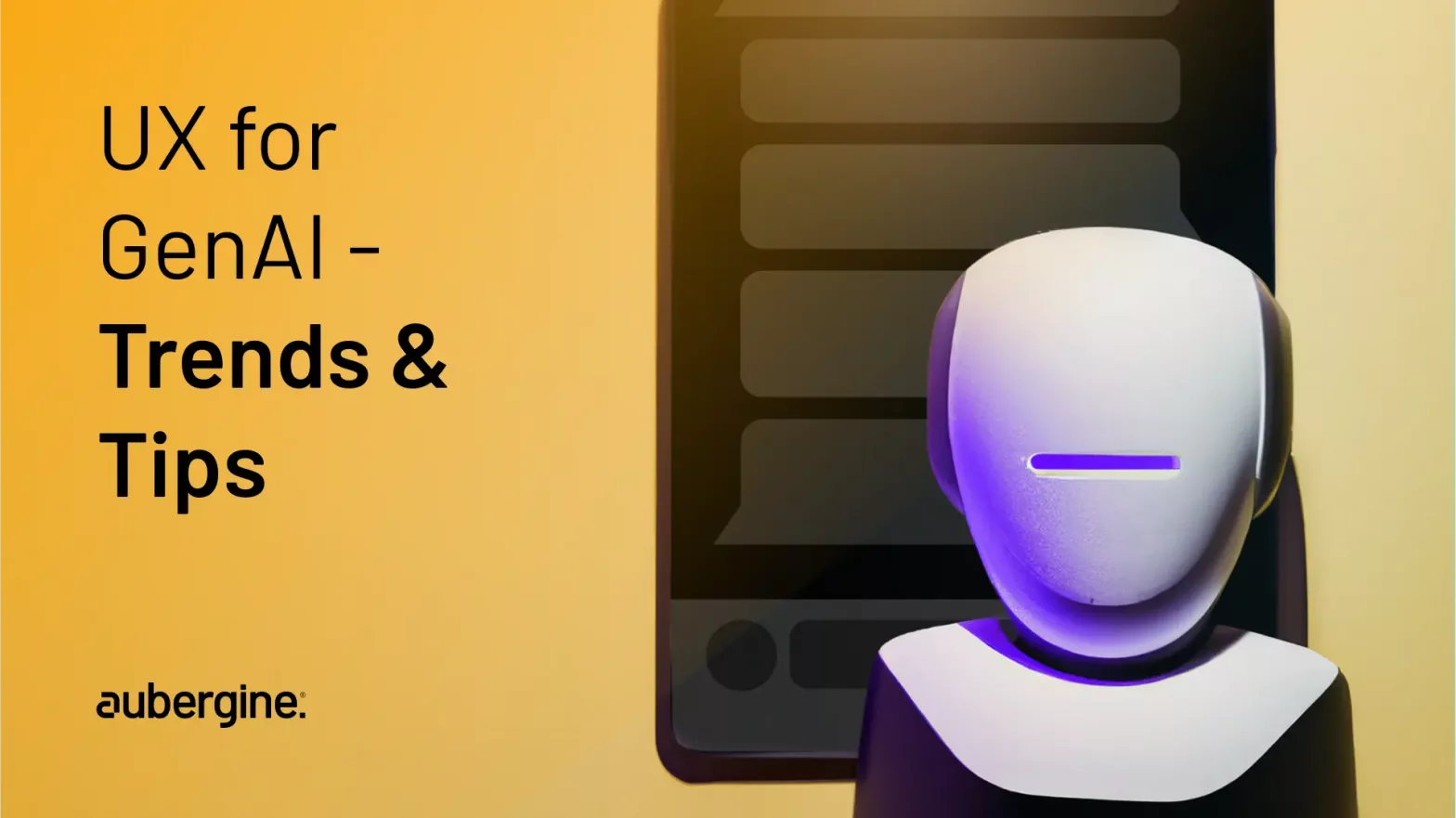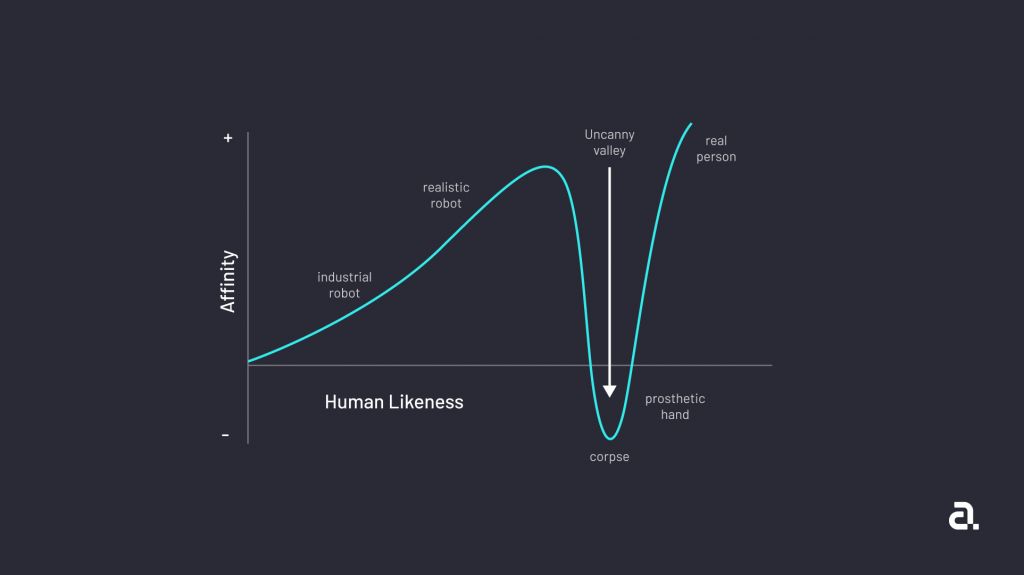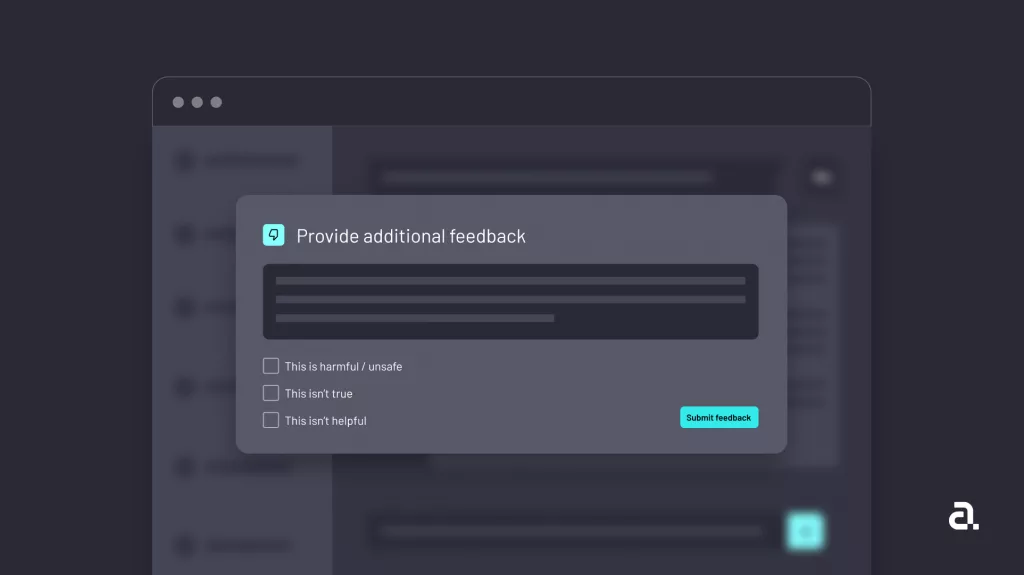
From humanizing AI interactions to enhancing user engagement, UX design holds transformative power in harnessing the full potential of Generative AI.
Generative AI is pulling forward the new potential for technical innovation, especially in the SaaS space. The global Generative AI market size was valued at USD 8.2 Billion in 2021 and is projected to reach USD 126.5 Billion by 2031.
As technology continues to evolve at an astonishing pace, designers and innovators must stay ahead of the curve, anticipating the needs and expectations of users in this dynamic landscape.
As the rapidly evolving GenAI models like ChatGPT integrate with tools we use daily, how do they redefine the ‘norm’ of what we traditionally consider good ‘user experience’? Moreover, as crafts persons of digital products, is it time to re-visit UX models as we know them?
In this blog, we explore how to approach UX for Generative AI in this new design world, along with tips and ideas for UX designers.
Regular UX patterns usually work well for websites and apps that have set layouts and clear user paths.
GenAI interfaces need to adjust to how users are acting and what they like, considering things like what users have done before and what’s happening right now. Regular UX designs might not be so good at giving responses that fit fast-evolving situations.
Common UX patterns might not completely understand how chat-like conversations and the AI behind them work.
GenAI interfaces should strive to deliver tailored responses and recommendations that align with the user’s preferences, interests, and goals.
Example: Designing chat
User queries could be simple, like “What is UX?”
Or complex, like: “Summarise a 500-page book in 3 lines.”
Observation: AI depends heavily on the input field. How do we help users ask better questions, & optimize results?
Possible solution: Define scope, limits & examples to help users ask better questions.

Standard UX designers can find it challenging to arrange and display lots of information in a way that’s easy for users to grasp and use.
Designers should look into fresh ideas and methods to simplify and present complicated information in a more user-friendly and easy-to-understand way.
Traditional UX patterns may not adequately address these different user segments’ diverse needs and expectations.
Designers must consider how to provide tailored experiences that account for varying levels of familiarity with the Generative AI technology and domain-specific knowledge.
Achieving contextual understanding often requires collecting highly personalized data. Generative AI demands more attention to dealing with privacy.
The question for designers is – How do we find a middle ground between gathering sufficient user information to improve our understanding of their context and still keeping their privacy intact and trust secure?
The UX metric of what we consider ‘good’ design is expanding rapidly with GenAI. To draw a picture:
In tech, anthropomorphism (the ability of a non-human thing to look like a human) is evolving fast with AI. In simpler words – things look more and more real, and not all for the best result. With how ‘real’ AI can get today, designers must re-evaluate how they perceive human-tech engagement.
Some ideas that might influence UX thinking more and more over the coming years:
A scenario where the tech looks too human like, and now a human being’s emotional response dips because it doesn’t induce excitement, but confusion. Hence, the two side of the spectrum are:
Point A (Not human enough )——— Sweet spot ———- Point B (Too human to be relatable )

The human urge to see human patterns around us. In AI, that could translate to the human instinct to imagine consciousness inside an LLM when there is actually none.
Hence, designers will have to navigate the ethics of AI and learn how to create systemic solutions and experiences that optimize existing AI governance, standards, and principles for creators and users. The role of UX/AI designers is thus to translate these policies into actual product experiences.
As the application of GenAI multiplies, it will inevitably impact user research. But what that will look like is up for debate. However, one shift already underway is adopting a broader design mentality.
A shift towards more standardized design will shape how digital products are created. This means how design systems view creativity is going to discover newer limits.
GenAI emerges as a powerful tool to add to the designer’s toolbox, providing a virtual brainstorming partner to fuel the creative process of crafting exceptional UX. GenAI will accelerate the development of user journeys by helping designers generate diverse ideas, challenge biases, and engage in iterative refinement at an unprecedented pace.
For example, GenAI can help designers create critical user journeys – a stepping stone in helping designers understand user motivations, goals, and pain points. Designers synthesize a wealth of information to create accurate representations of the expected user experience, and the process is most often collaborative, spans over cycles, and is exhaustive. GenAI can help designers accelerate, iterate, and refine user journeys efficiently to deliver potentially impactful experiences.
A foreseeable challenge will be to be mindful of AI bias and combine that knowledge with the wisdom of human subject expertise to push the boundaries of functional creativity in UX truly.
Before integrating ChatGPT into your product or application, clearly define the specific use cases and goals you want to achieve. Understand how ChatGPT can enhance the user experience by providing support, answering common queries, or assisting with tasks.
By defining these use cases upfront, you can tailor the chatbot’s functionality to meet user needs effectively.
Pay careful attention to the conversational flow and user interactions with ChatGPT. Design a natural and intuitive dialogue that guides users through the conversation. Use prompts, suggestions, and context-aware responses to steer the conversation meaningfully.

Uphold ethical design principles and ensure that ChatGPT respects user privacy, adheres to content guidelines, and avoids harmful or biased responses. Implement mechanisms for users to provide feedback and report issues.
Consider inclusivity by designing for a diverse user base, ensuring the chatbot understands different languages, dialects, and accessibility needs. Regularly monitor and update the chatbot’s responses to maintain a positive user experience.


AI’s ability to personalize experiences extends to improving digital accessibility. Generative AI can help design platforms that accommodate users with disabilities, addressing issues like visual impairments, hearing loss, and cognitive difficulties.

This results in adaptable websites and apps offering features like voice output, vibration, larger text, simplified navigation, and more, making digital experiences inclusive and broadening their reach, a critical yet often neglected aspect of UI/UX design.
For expert tips on becoming a successful UX designer, read this blog post on Crucial UX Designer Skills You Need to Develop.
Also read: How we improved Calendly’s one-on-one event type feature with UX re-design experiments
GenAI and UX design will be at the forefront of innovation in 2024. To succeed in this dynamic landscape, designers and innovators must remain adaptable, ethically conscious, and committed to creating user-centric experiences that embrace the full potential of Generative AI.
The key trends we’ve explored in this blog underscore the importance of adaptability, understanding user intent, simplifying complex information, addressing diverse user needs, and navigating the ethical and privacy considerations inherent in GenAI UX design.
Here’s to hoping that designers keep pushing the boundaries of creativity and inclusivity to ensure a brighter, more accessible AI lead digital future for all!
If you are interested in learning more about how to apply UX for Generative AI in your projects, or if you need professional help, we are here for you.
At Aubergine Solutions, we are a team of passionate and experienced UX designers who can help you create engaging and effective GenAI experiences for your users. We offer a range of services, such as UX design, UX audit, research, accessibility audit, and many more.
Please feel free to contact us today and get a free consultation and quote for your project.

